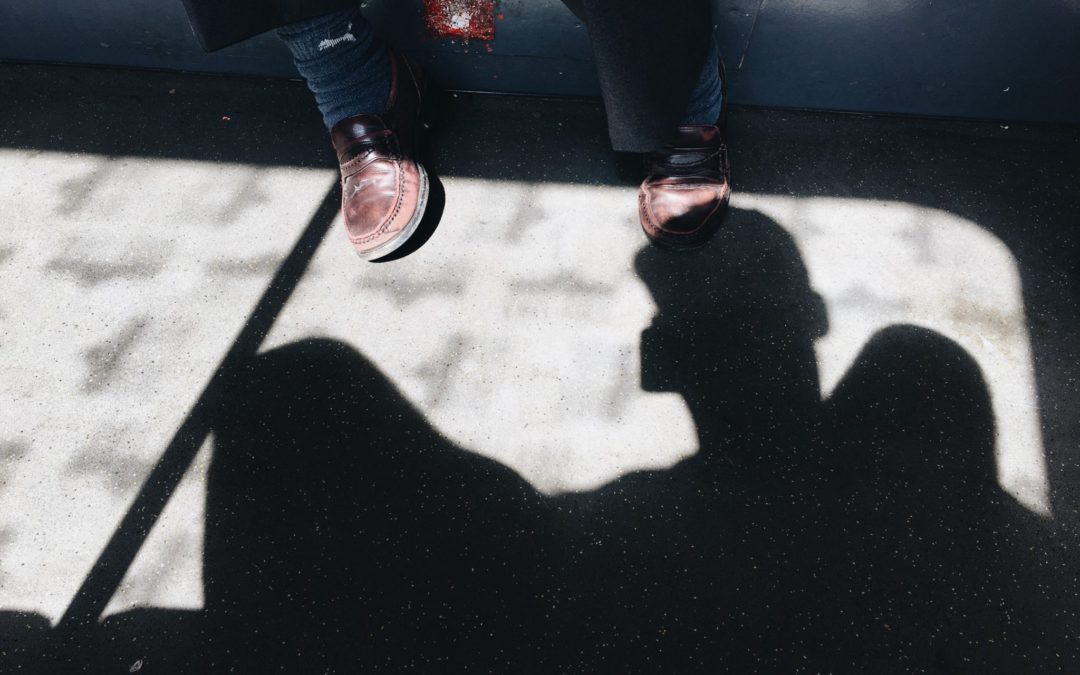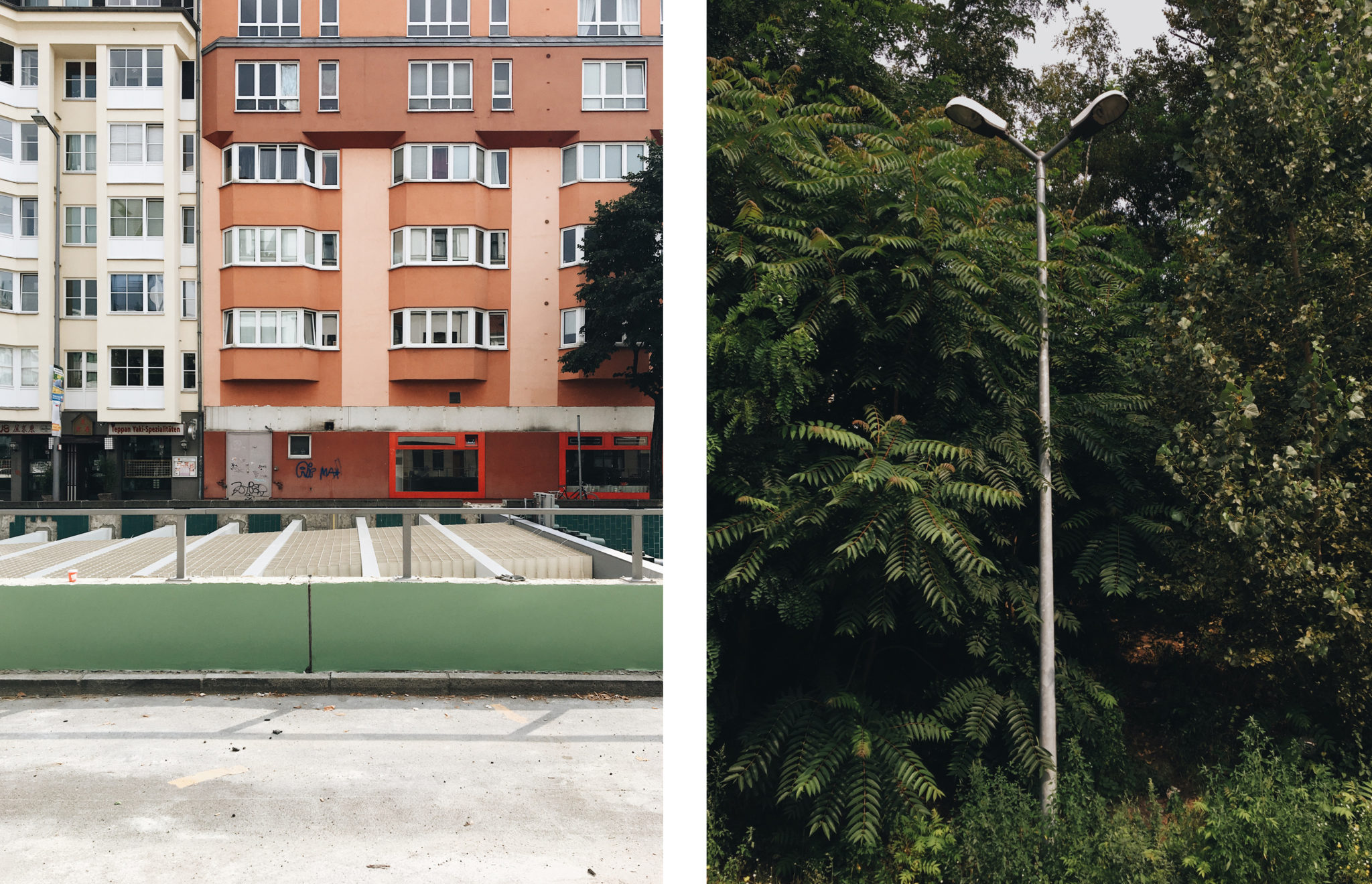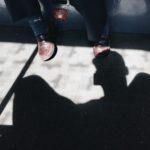We’re rushing through streets nearly every day, trying to get from A to B in the fastest way possible. This is especially the case when you’re living in bigger cities like Berlin, for example. Hectic is our constant companion on our day-to-day tours, causing stress, exhaustion and sometimes even anxiety, with no remorse. As we’re speeding through urban canyons, desperately trying to avoid any unwanted physical contact with one another, we become increasingly detached from our surroundings, and sometimes even from ourselves. We feel the need to hurry – possibly being late for work or for an appointment is indeed one of many reasons to do so – even though most of the time we don’t really need to; we just want to get it over and done with.
When I was a young boy, around 10 or so, my father always suggested we walk slowly in places we visited during our family holidays, reasoning that if I walked in a more moderate speed I would be able to soak up the beauty of the things around me, and thus have a truly enriching experience no matter where we were. Of course, as a 10-year-old boy, I couldn’t even imagine what he was talking about let alone comprehend his teachings, so I rejected his advice and kept on rushing. I continued this behavior until a while ago, but my childish reasons from back then – excitingly wanting to see as many things as possible in the least amount of time – weren’t really applicable anymore. Instead of curiously soaking up the world around me, I was more and more concerned about being where I wanted to be, as fast as I could, without any distractions whatsoever. In a way, I had shut myself off from the world surrounding me.
Up until one very particular day in my life, I was a dedicated jaywalker, always careful and attentive, and quick to respond to speeding obstacles. That was until I was forced to wait at a seemingly random and dreadfully busy intersection, which I had to cross. Acting out of a strange mixture of boredom and stress, I decided to take a deep breath and feel a bit more comfortable with the situation I was in. Turning my head left and right, I started noticing many different things, the details of my surroundings. For a few seconds I opened up, if you will, guiding my attention towards a beautiful dress worn by a kind-looking elderly woman across the street; the color arrangements of a middle-aged man standing in front of a corner shop (lilac, he was wearing clothes in different shades of lilac, even his tablet was covered in lilac too); the interesting height differences between a man and two Great Danes he’d taken out for a walk; the scent of beer and pizza, and coffee and cigarettes, coming from various sides…transforming this usually uncomfortable moment of forced waiting into something unique and special.
Upon crossing the street and continuing my course – the green light indicated its allowance to do so – a subtle smile appeared on my face: had I just shared an intimate moment of patience with complete strangers at an intersection?
On my way forth towards my destination I felt unusually light and present, noticing all kinds of patterns, shapes, and colors. Rays of light bounced off various surfaces, creating plenty of shadows and generating an overabundance of beautiful light situations in return. All this within only a couple of hundred meters. I suddenly remembered how my father used to tell me to slow down and pay attention to my surroundings. I also remembered that after years of trying, he eventually gave up. Who would have thought that about twenty years later, his teachings would not only come to fruition but also unintentionally lay the groundwork for both a great photographic practice and an exciting way to widen general perception and strengthen the skill of patience?
Historically, the Sunday stroll was always vital to the well-being of the majority of people: the obligatory walk to church on the only labour-free day of the week, used for recreation, quality time with the family, meeting friends and listening to the Word of God – a truly social experience, if you will. Even artists, writers and, later, photographers have devoted their craft to telling the art of strolling – Henri Cartier-Bresson is a perfect example of that. Nowadays, however, it is quite uncommon to just slowly stroll around, observe and pay attention to life happening around you, especially in places usually not frequented by travelers or tourists.
People witnessing me appear to be puzzled by both my slow walking speed and my intense and curious way of looking. Although I agree with Franz Hessel’s claim that you, the flaneur, do look somewhat suspicious, I would rather say interesting. Adding the fact that most of the time I don’t carry a camera with me and am solely photographing with my smartphone, mostly in unusual places, seems to be sufficient enough to be approached by a few irritated, yet interested people, striking up a conversation in an attempt to find out my intentions. A classic, neck dangling camera, however, appears to be the only visible indicator of intent, allowing the general public to decide whether to dismiss or welcome you upon first sight without the need to interact with you.
Usually, those conversations end in smiles, sometimes spontaneous coffee dates, and on rare occasions even turn into long-term contacts. Anxious at first about being approached by strangers – somehow I always felt the need to explain myself – I quickly adapted and became more confident with time. I now see the good in irritating people – it just means that there is something new happening and they don’t know how to properly react to it, which mostly leads to a conversation, and that is always a good thing.
Today, I see the slow stroll not only as a great photographic practice – as it allows you to habituate a certain way of seeing and perceiving things – but also as a way of easing your mind. Having to stop at a red light is no longer only an aspect of obedience, but a welcomed invitation to just pause for a moment and let your eyes and thoughts wander around. If you remove the debatable necessity of speed and are willing to open yourself up emotionally, you will start catching up the vibes around you, thus training your sensitivity towards your surroundings and your empathy towards others, eventually finding yourself calmer, more content, and confident during unforeseen circumstances.
When I told my father about my past experiences, he warmly replied: “You see, that’s exactly what I was trying to teach you all those years ago. Sometimes it’s not bad at all to just listen and take someone’s advice, is it?”
All Images © Alexandre Kurek, 2017 / shot & edited on iPhone using VSCO
About Author

- Alexandre is a self-taught photographer and writer, born 1987 in the Democratic Republic of Congo, and deeply interested in exploring and understanding the world within and around him. He has been working in the creative field for over six years now, either as a photographer, art-director or writer. His work has been published in various magazines, featured on websites and blogs and has been exhibited in art-galleries as well as in various group shows.













